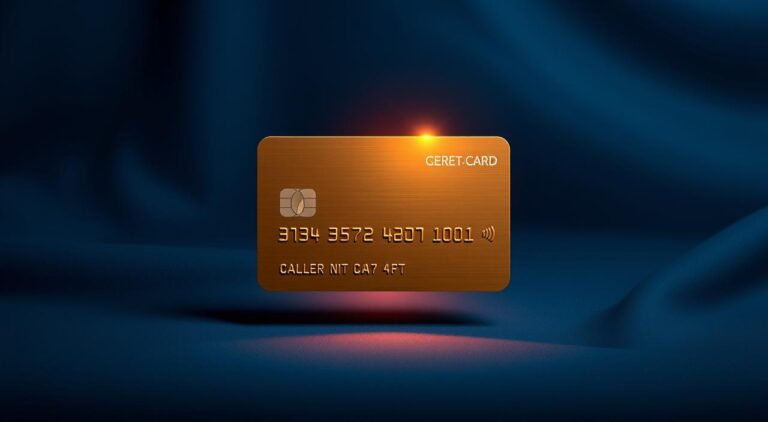Top Best Personal Line of Credit Options in 2025
A personal line of credit offers the flexibility of a credit card combined with the spending power of a loan, making it an ideal solution for ongoing expenses. You can borrow only what you need, potentially saving on interest payments.
For those looking to fund home improvements or consolidate debt, a personal line of credit can be an attractive option. By comparing rates and fees from reputable lenders, you can make an informed decision that suits your financial needs.
Key Takeaways
- Flexible borrowing solution combining credit card convenience with higher loan limits
- Borrow only what you need, potentially saving on interest
- Comparison of rates, fees, and borrowing limits from top lenders
- Options for both secured and unsecured personal lines of credit
- Guidance for different financial situations and needs
Understanding Personal Lines of Credit
Understanding the nuances of personal lines of credit can help individuals make informed decisions about their financial options. A personal line of credit is a financial product that offers flexibility in borrowing, allowing individuals to access funds as needed.
What Is a Personal Line of Credit?
A personal line of credit is a type of loan that provides a revolving credit limit, enabling borrowers to draw funds, repay them, and draw again without having to reapply. This financial tool is particularly useful for managing ongoing expenses or consolidating debt. Unlike a traditional personal loan, which is typically disbursed in a lump sum, a personal line of credit offers the flexibility to borrow only what is needed, when it is needed.
How Personal Lines of Credit Work
When you open a personal line of credit, you’re given a credit limit, which is the maximum amount you can borrow. You can draw on this line of credit as needed, and you’ll only be charged interest on the amount you actually borrow. The interest rate may be variable, meaning it can fluctuate over time based on market conditions. Repayment terms vary by lender, but typically, you’ll be required to make monthly payments, which may include both principal and interest.
Secured vs. Unsecured Lines of Credit
Personal lines of credit can be either secured or unsecured. A secured line of credit requires collateral, such as a home or investment accounts, to back the loan. This reduces the lender’s risk, often resulting in a lower interest rate. In contrast, an unsecured line of credit doesn’t require collateral but may have a higher interest rate to compensate for the increased risk. Your credit score plays a significant role in determining the terms you’ll qualify for, including the interest rate and whether you’ll need to provide collateral.
When choosing between a secured and unsecured line of credit, consider not only the interest rate but also the potential risks and fees associated with each option. Understanding these factors can help you make an informed decision that aligns with your financial situation and borrowing needs.
Benefits of Using a Personal Line of Credit
A personal line of credit offers numerous benefits that make it an attractive financial tool for various needs. One of the primary advantages is its flexibility, which allows borrowers to access funds as needed.
Flexibility in Borrowing
A personal line of credit provides flexibility in borrowing, enabling you to draw funds only when required. This flexibility is particularly useful for managing ongoing expenses or projects with variable costs. You can borrow, repay, and re-borrow as needed, making it an adaptable financial solution.
Only Pay Interest on What You Use
With a personal line of credit, you only pay interest on the amount you use, not on the entire credit limit. This feature can lead to significant savings, especially for those who don’t need to use the full amount available to them. It also encourages responsible borrowing, as you’re not charged interest on unused funds.
Potential for Lower Interest Rates Than Credit Cards
Personal lines of credit often come with lower interest rates compared to standard credit cards. Some lenders offer rates that are 5-10 percentage points below average credit card APRs for well-qualified borrowers. This interest rate advantage makes personal lines of credit particularly attractive for larger expenses or longer-term borrowing needs.
- Personal lines of credit typically offer significantly lower interest rates than standard credit cards.
- Your credit score plays a crucial role in determining the interest rate you’ll receive.
- Even for borrowers with good but not excellent credit, personal lines of credit often provide more favorable rates than credit cards.
While personal lines of credit may have some fees that credit cards don’t, such as annual maintenance fees, the substantial interest rate savings often more than offset these costs for borrowers carrying balances over time.
When to Use a Personal Line of Credit
There are several scenarios where opting for a personal line of credit makes financial sense. A personal line of credit can provide the necessary funds for various expenses, offering flexibility and potentially lower interest rates compared to traditional credit options.
Home Improvements
Using a personal line of credit for home improvements can be a smart financial move. It allows homeowners to access funds as needed for renovations or repairs, potentially increasing their property’s value. The flexibility to borrow and repay as needed makes it an attractive option for projects that may require ongoing expenses.
Debt Consolidation
For individuals dealing with multiple debts, a personal line of credit can be used to consolidate these debts into a single, more manageable loan with a potentially lower interest rate. This can simplify payments and reduce the overall cost of the debt.
Medical Expenses
Unexpected medical bills can be a significant financial burden. A personal line of credit can provide immediate access to funds to cover these expenses, allowing individuals to focus on recovery rather than financial stress.
Wedding Expenses
Planning a wedding can be costly, and a personal line of credit can help cover expenses. It offers a flexible way to manage wedding costs, allowing couples to borrow only what they need, when they need it.
Emergency Funds
A personal line of credit can serve as a backup emergency fund, providing immediate access to funds for unexpected expenses like car repairs or medical bills. Unlike traditional savings, a personal line of credit can be established relatively quickly, offering a financial safety net. Its revolving nature means it remains available for multiple emergencies over time.
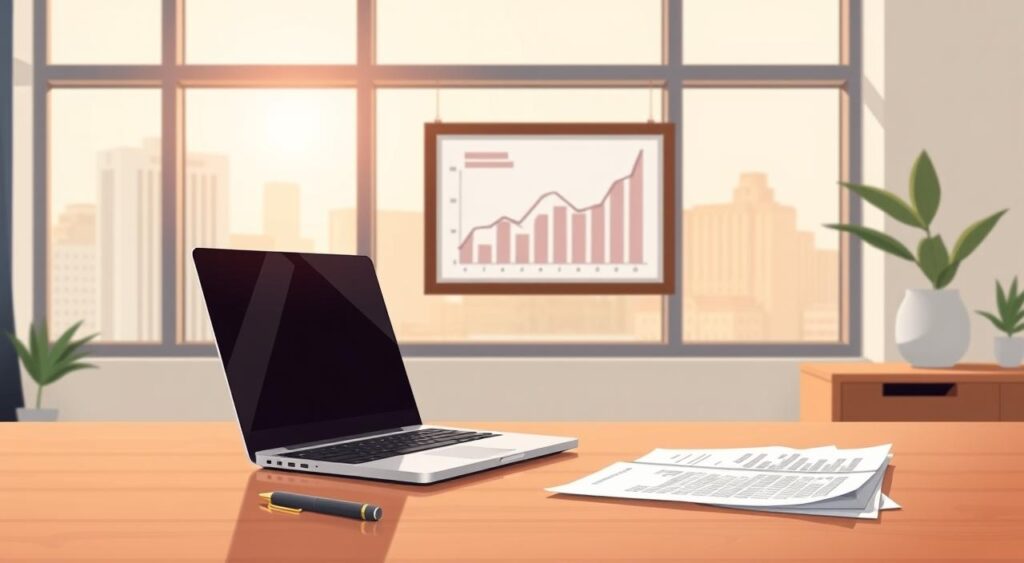
Having a personal line of credit in place before emergencies occur can help avoid high-interest credit cards or predatory lending options. While maintaining a cash emergency fund is still recommended, a personal line of credit provides an additional layer of financial security.
How to Qualify for a Personal Line of Credit
Lenders evaluate various aspects of your financial profile to determine eligibility for a personal line of credit. Understanding these requirements can help you prepare and increase your chances of approval.
Credit Score Requirements
A good credit score is crucial when applying for a personal line of credit. Most lenders require a credit score of at least 700, though some may consider scores as low as 650. A higher credit score not only improves your chances of approval but may also qualify you for better interest rates and terms. To maintain a healthy credit score, ensure you make timely payments, keep credit utilization low, and monitor your credit report for errors.
Income and Employment Verification
Lenders need assurance that you have a stable income to repay the loan. You’ll typically need to provide proof of employment and income documentation, such as pay stubs or tax returns. Self-employed individuals may need to provide additional financial documents. A stable employment history and sufficient income can significantly enhance your application.
Debt-to-Income Ratio Considerations
Your debt-to-income (DTI) ratio is another critical factor lenders consider. It represents the percentage of your monthly gross income that goes towards paying debts. Generally, lenders prefer a DTI ratio of 36% or less. A lower DTI ratio indicates a better ability to manage additional debt, making you a more attractive candidate for a personal line of credit.
Application Process
The application process for a personal line of credit typically begins with prequalification, where lenders perform a soft credit check to provide preliminary approval and rate estimates. After prequalification, you’ll need to complete a formal application, providing detailed personal and financial information. Most lenders now offer online applications, allowing you to upload required documents electronically. Upon approval, review the loan documents carefully before signing, ensuring you understand the terms, including the credit limit, interest rate, and repayment expectations.
To increase your chances of qualifying for a personal line of credit, it’s essential to:
- Check your credit score and history
- Gather necessary financial documents
- Understand the lender’s requirements and terms
- Apply with a lender that suits your financial profile

Best Personal Line of Credit Options in 2025
Selecting the best personal line of credit in 2025 requires careful consideration of several key factors. With numerous lenders offering varying terms, it’s crucial to evaluate options based on interest rates, fees, and overall cost.
Our Selection Criteria
We selected the best personal line of credit options by analyzing interest rates, fees, and lender reputation. Our evaluation considered the overall cost of the credit line, including any origination fees or annual fees. We also examined the repayment terms and the flexibility offered by each lender.
Factors to Consider When Choosing
When selecting a personal line of credit, several factors are crucial. These include the interest rate, fees, and credit limit. It’s also important to consider the lender’s reputation and the quality of their account management tools. Additionally, understanding the terms of the loan, including the draw period and repayment expectations, is vital.
- Evaluate the interest rate and how it affects your total borrowing cost.
- Consider the fee structure, including any annual or origination fees.
- Assess the credit limit to ensure it meets your needs.
Best Marketplace: MoneyLion

Overview
MoneyLion stands out as a premier marketplace for personal lines of credit, offering a streamlined and user-friendly experience. The platform allows users to complete the entire process online in seconds with a short form, and viewing results is both free and safe, as it won’t affect your credit score.
Pros
MoneyLion’s sophisticated matching algorithm considers multiple factors beyond just your credit score, including income, employment history, and existing debt, to connect you with appropriate lenders and loan options.
- MoneyLion’s streamlined application process takes just minutes to complete, requiring basic personal and financial information to generate personalized personal loan offers.
- The platform provides a user-friendly dashboard where you can compare multiple credit offers side-by-side, evaluating differences in interest rates, credit limits, fees, and terms.
- MoneyLion includes educational resources that explain how personal lines of credit work, helping borrowers make informed decisions about which offers best suit their financial needs.
Cons
While MoneyLion offers a comprehensive service, it’s essential to carefully review the terms and conditions of any loan or credit offer before committing.
Features
After selecting a personal line of credit offer through MoneyLion, you’re directed to the lender’s platform to complete the full application, with many partner lenders offering quick approval decisions and rapid funding.
By providing a platform that connects borrowers with multiple lenders, MoneyLion empowers users to find the most suitable loan or credit solution for their needs, making it an invaluable resource for those seeking borrowing options.
Best for No-Interest Line of Credit: Elastic

Overview
Elastic’s personal line of credit is notable for its absence of interest charges, replaced by a fee-based system. This unique approach can be beneficial for borrowers who need flexibility in their repayment schedules.
Pros
Flexible Payment Options: Elastic offers borrowers the ability to choose between bi-weekly payments aligned with paydays or monthly payment schedules, accommodating different financial situations.
Revolving Credit Line: As you repay your balance, your available credit is replenished, allowing you to draw funds again without reapplying, making it a convenient option for ongoing financial needs.
Cons
While Elastic’s fee structure can be advantageous, it’s crucial to understand that the cash advance fee ranges from 5% to 10%, and the carried balance fee can be as high as $350, depending on your balance and payment frequency.
Features
- Elastic’s unique fee structure replaces traditional interest with two primary fees: a cash advance fee and a carried balance fee.
- The carried balance fee varies based on your outstanding balance and payment schedule, with bi-weekly payments typically resulting in lower overall fees.
- Elastic provides online account management tools, enabling borrowers to track their balance, make payments, and request additional draws at any time.
By understanding the intricacies of Elastic’s personal line of credit, borrowers can make informed decisions about whether this product aligns with their financial needs and goals.
Best for No Annual Fees: U.S. Bank

Overview
For those seeking a personal line of credit without the burden of annual fees, U.S. Bank is a top choice. U.S. Bank’s personal line of credit is designed to offer flexibility and convenience, making it an attractive option for borrowers who need access to funds without the additional cost of annual maintenance fees.
Pros
The lack of an annual fee is a significant advantage of U.S. Bank’s personal line of credit. Here are some key benefits:
- U.S. Bank’s personal lines of credit feature no annual maintenance fee, a significant advantage that can save borrowers hundreds of dollars over the life of the credit line.
- Borrowers enjoy multiple access options for their funds, including online banking transfers, mobile app management, ATM access, in-branch withdrawals, and personal access checks.
- The bank offers automatic payment options that can be set up to ensure timely payments, helping borrowers maintain good credit.
- U.S. Bank’s personal lines of credit can be linked to checking accounts to serve as overdraft protection, automatically transferring funds when needed.
- The bank provides robust online and mobile account management tools that allow borrowers to track their balance, view transaction history, make payments, and request additional draws.
Cons
While U.S. Bank’s personal line of credit offers many benefits, it’s essential to consider the potential drawbacks, such as the requirement for a good credit score and the possibility of interest rate changes.
Features
U.S. Bank’s personal line of credit comes with several features that enhance its usability and convenience. These include:
- Flexible repayment terms that allow borrowers to manage their loan repayment effectively.
- Easy access to funds through various channels, including ATMs, online banking, and mobile banking.
- The ability to link the credit line to a checking account for overdraft protection.
By choosing U.S. Bank for a personal line of credit, borrowers can enjoy a flexible and cost-effective borrowing solution. The absence of an annual fee, combined with multiple access options and robust account management tools, makes U.S. Bank a compelling choice for those in need of a personal line of credit.
Best for Large Lines of Credit: Truist
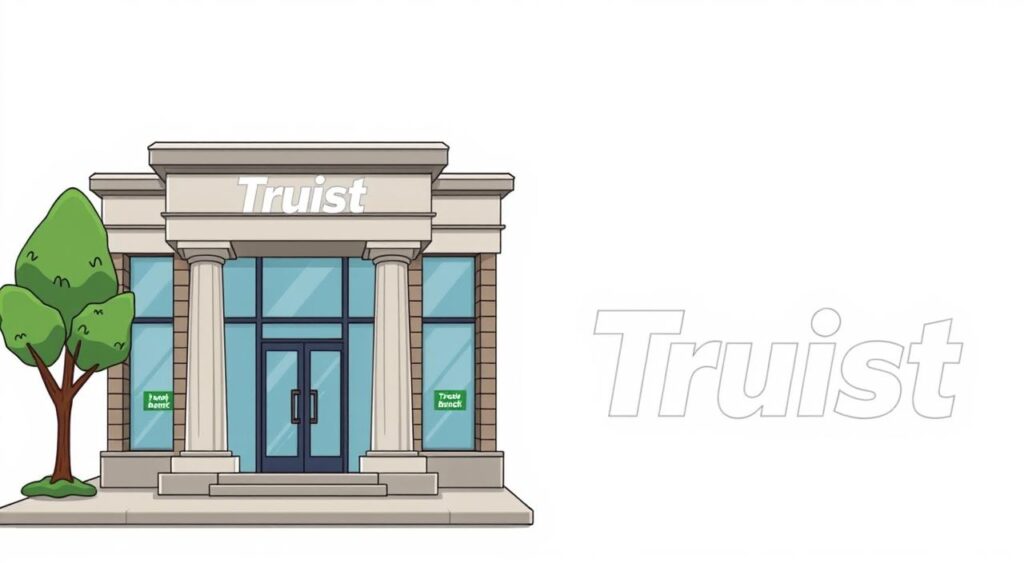
Overview
For those requiring large lines of credit, Truist emerges as a top contender in the financial landscape. Truist offers a range of personal line of credit options that cater to various financial needs, making it an attractive choice for individuals seeking substantial credit.
Pros
Truist’s personal line of credit stands out due to its flexible credit limits, ranging from $300 to $100,000, depending on the specific product and applicant qualifications. The bank’s offerings include unsecured lines up to $50,000, secured lines starting at $25,000, and specialized physician lines up to $100,000.
Another significant advantage is the absence of application and cash advance fees, which reduces the overall cost of borrowing compared to many competitors.
Cons
One potential drawback is that new customers must visit a branch in person to apply, which may be inconvenient for some. Existing Truist customers, however, can apply by phone, making it more accessible for them.
Features
Truist provides flexible access to funds through various channels, including online banking transfers, mobile app management, in-branch withdrawals, and personal access checks. In select cases, Truist offers same-day funding for approved personal lines of credit, providing quick access to funds for time-sensitive needs or emergencies.
The bank’s personal line of credit options are designed to be adaptable to different financial situations, making Truist a versatile choice for individuals seeking a personal line of credit.
Personal Line of Credit vs. Other Financial Products
Personal lines of credit offer a flexible financing option, but how do they compare to other financial products like personal loans and credit cards? Understanding these differences is crucial for making informed financial decisions.
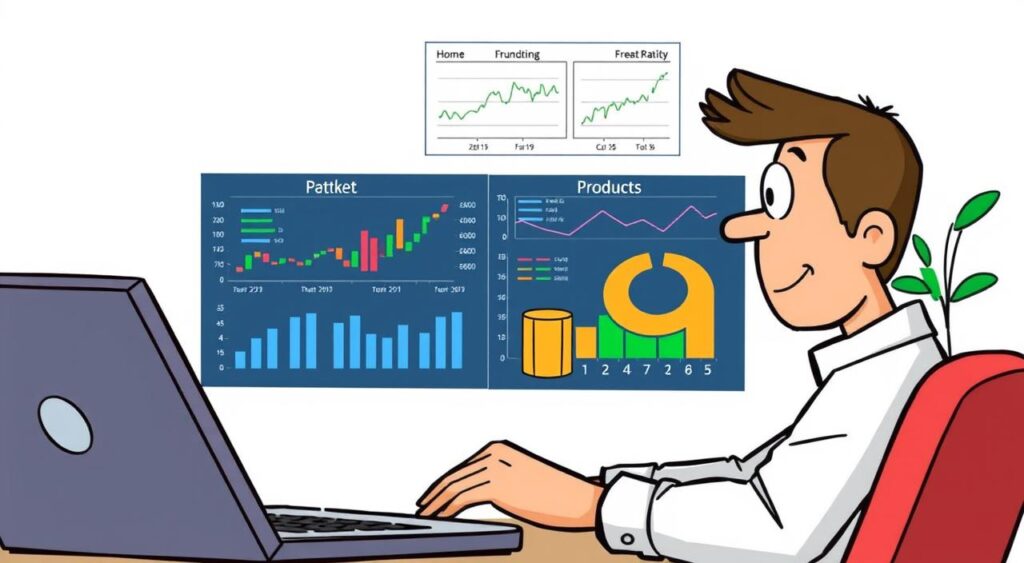
Personal Line of Credit vs. Personal Loans
A personal line of credit and a personal loan are both popular borrowing options, but they serve different purposes. A personal loan provides a lump sum that you repay over a fixed term, usually with a fixed interest rate. In contrast, a personal line of credit allows you to draw funds as needed up to a certain limit, repay, and reuse, offering more flexibility.
When you need funds for a specific expense, a personal loan might be more suitable. However, for ongoing expenses or projects where the total cost isn’t immediately known, a personal line of credit can be more beneficial.
Personal Line of Credit vs. HELOC
A Home Equity Line of Credit (HELOC) and a personal line of credit share some similarities, but the key difference lies in collateral. A HELOC is secured by your home’s equity, potentially offering lower interest rates but risking your home in case of default. A personal line of credit is typically unsecured, meaning it doesn’t require collateral, but might have a higher interest rate.
Choosing between the two often depends on your credit score, financial situation, and whether you’re willing to risk your home for lower rates.
Personal Line of Credit vs. Credit Cards
When comparing a personal line of credit to credit cards, several factors come into play. Interest rates are a significant consideration; personal lines of credit often have lower rates than credit cards, especially for larger borrowings. Additionally, while credit cards are ideal for smaller purchases and offer rewards, personal lines of credit are more suited for larger expenses or debt consolidation.
- Personal lines of credit typically offer significantly lower interest rates than credit cards, resulting in substantial savings for carried balances.
- Credit cards generally have lower credit limits than personal lines of credit, making the latter more suitable for larger expenses.
- Credit cards offer unique benefits like rewards programs, introductory 0% APR periods, and purchase protections that personal lines of credit don’t.
- Accessing funds differs between the two: credit cards offer immediate purchasing power, while personal lines of credit require transferring funds to your checking account.
- Credit cards often have higher fees for cash advances, while personal lines of credit offer more favorable terms for accessing cash directly.
How to Apply for a Personal Line of Credit
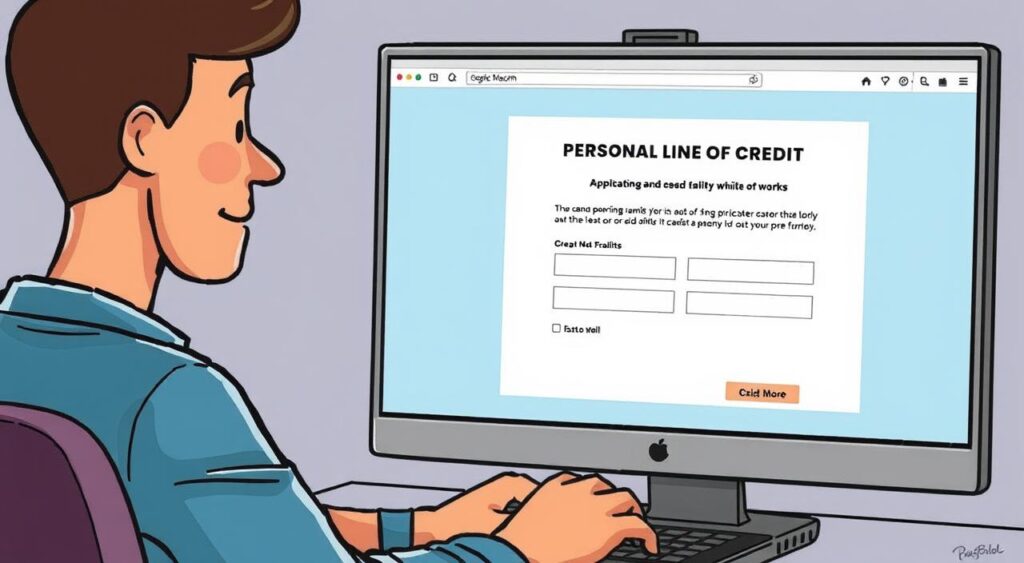
When you’re ready to apply for a personal line of credit, it’s essential to know what to expect during the application process. Lenders like LendingPoint offer personal lines of credit with varying terms, so understanding the requirements can help you prepare.
Required Documentation
To apply for a personal line of credit, you’ll typically need to provide certain documents to verify your identity, income, and creditworthiness. This may include pay stubs, bank statements, and identification documents.
Application Steps
The application process for a personal line of credit involves several steps. First, you’ll need to submit your application, either online or in-person, depending on the lender’s requirements. The lender will then review your credit history, verify your income, and assess your debt-to-income ratio.
What to Expect After Applying
After submitting your application, the lender will review your information and make a decision. This process can take anywhere from a few minutes to several business days, depending on the lender. If approved, you’ll receive a formal offer outlining your credit limit, interest rate, and other terms.
The funding process varies by lender. Some lenders, like online lenders, can provide access to your personal line of credit within one business day after approval. Traditional banks may take 3-5 business days to set up your account and make funds available.
Once your personal line of credit is established, you’ll receive instructions on how to access your funds. This typically involves transferring money to your linked checking account through online banking, mobile app, or by calling customer service. You’ll begin receiving monthly statements showing your current balance, available credit, minimum payment due, and transaction history.
Understanding the terms of your personal line of credit is crucial. Make sure to review your offer carefully before accepting, and be aware of any fees associated with your account.
Conclusion

In conclusion, selecting the right personal line of credit can be a game-changer for managing expenses and achieving financial goals. Personal lines of credit offer a unique combination of flexibility and borrowing power, making them an excellent financial tool for managing ongoing expenses, funding projects with uncertain costs, or establishing a financial safety net.
The best personal line of credit for you depends on your specific needs. For instance, MoneyLion offers the best marketplace experience, Elastic provides a unique no-interest option, U.S. Bank stands out for no annual fees, and Truist excels with large credit limits. Before applying for a personal line of credit, carefully consider factors including interest rates, fee structures, credit limits, accessibility features, and qualification requirements to find the option that best aligns with your financial situation and goals.
Remember that responsible use of a personal line of credit can help build your credit score and provide financial flexibility. However, it’s essential to borrow only what you need and have a clear repayment strategy to avoid accumulating excessive debt. As with any financial product, regularly reassess your personal line of credit to ensure it continues to meet your needs and offers competitive terms.
By understanding the benefits and terms of personal lines of credit and choosing a lender like Prosper that fits your needs, you can make informed decisions that support your financial well-being.






